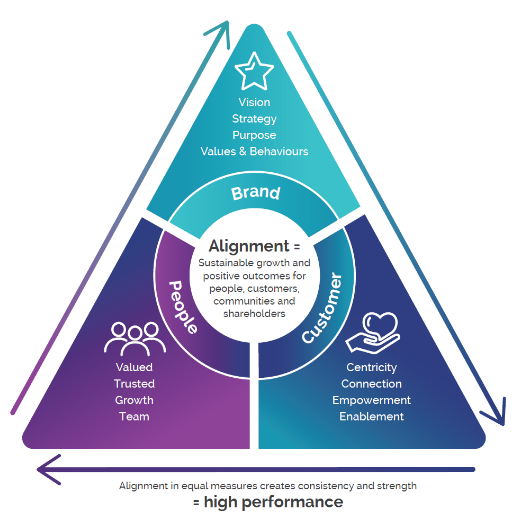Alignment, empathy, and leading effective customer experiences
- dragonfish
- Oct 17, 2019
- 3 min read
Updated: Nov 29, 2021
Our research shows that companies who invest in aligning customer experience and the experience of their people, built on solid culture foundations, are 4 times more profitable than those that don’t.
Sustainable growth is increasingly determined by the experiences your customers have with your brand, and those experiences, regardless of tech, are dependent entirely on the behaviours and decisions of your people. However, despite a wealth of widely available information on the topics of customer experience (CX) and employee experience (EX), very few organisations have sought to prioritise and fully understand the relationship between the two. The truth is, CX and EX are so closely linked that it’s almost impossible to analyse and develop each one in isolation. Superior customer experience is in fact the result of leading a highly effective culture and employee experience.
Where to start with effective CX
Through our research we have found that companies at the top of the CX league tables have one thing in common – they all have a culture of putting themselves in the shoes of their customers, and seeing the world through their eyes. This may seem like an obvious and widely adopted approach in modern business, but it seems some are doing it much better than others. The underlying output of effectively identifying with your customers is empathy, which will enable you to understand and show compassion for their needs, wants, circumstances, expectations, and alternatives. And, when a business embeds empathy in the processes, decision-making and daily behaviours of its people, CX is dramatically improved.
Inspiring empathy in your organisation
Empathy is a difficult aspect of CX to get right. Why? Well, emotional maturity is rarely found in the criteria for new applicants during recruitment, it’s a difficult skill to teach, and it receives little priority in budgets or business strategies. But, that’s not to say it’s an impossible task. Start by allowing your people to experience your product or service, or at least give them a glimpse into a day in the life of your customer. And remember, it’s the brands that hire for attitude over skill, invest heavily in product knowledge, then give permission to front-line people to make judgement calls – who ultimately create the environment for their teams to deliver memorable customer experiences, creating a better experience for your customer.
It’s customer experience, not service
With the best will in the world, if it’s only your front-line people who are concerned with customer experience, then your attempts will likely fail. True customer experience success has to come from all areas of the business. Successful implementation is more likely to occur when the process has considered the role of leadership, internal culture and behaviours, and is thought of as a business-wide change programme. Taking a step back to view the context and other macro factors that might impact your customers’ experience can provide some illuminating insights, which can help to focus and improve your delivery.
The culture of success
There is a strict correlation between customer experience and the experience of your people, yet less than 10% of organisations measure employee experience (EX).
Don’t leave your EX and CX to chance. At dragonfish, we support organisations to understand the links between their CX and EX and in doing so, unlock performance. We help to fuse your people and customers to drive success in your business.
To find out more about the importance of customer experience and the experience of your people, check out our latest infographic…





Comments